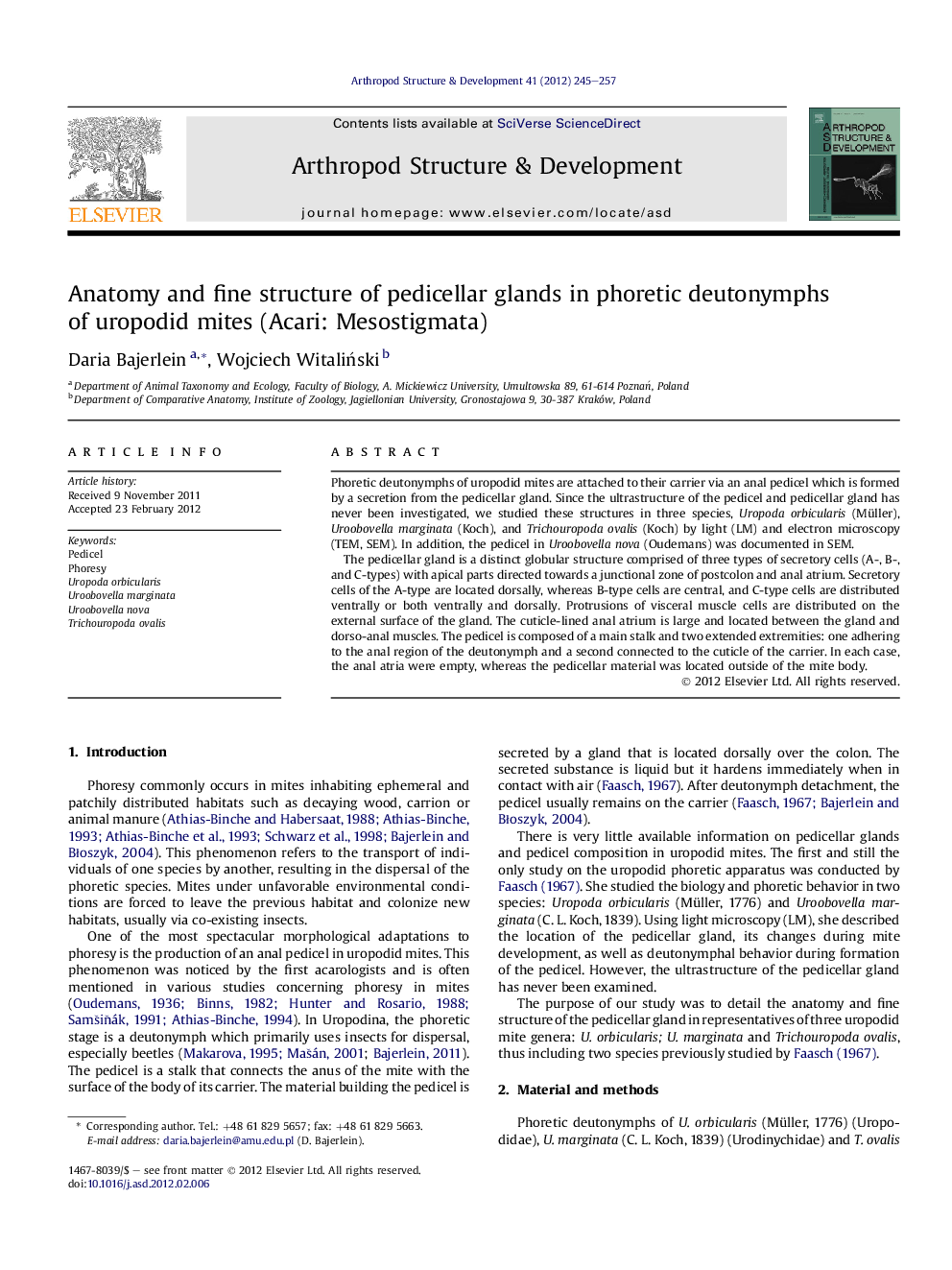| Article ID | Journal | Published Year | Pages | File Type |
|---|---|---|---|---|
| 2778681 | Arthropod Structure & Development | 2012 | 13 Pages |
Phoretic deutonymphs of uropodid mites are attached to their carrier via an anal pedicel which is formed by a secretion from the pedicellar gland. Since the ultrastructure of the pedicel and pedicellar gland has never been investigated, we studied these structures in three species, Uropoda orbicularis (Müller), Uroobovella marginata (Koch), and Trichouropoda ovalis (Koch) by light (LM) and electron microscopy (TEM, SEM). In addition, the pedicel in Uroobovella nova (Oudemans) was documented in SEM.The pedicellar gland is a distinct globular structure comprised of three types of secretory cells (A-, B-, and C-types) with apical parts directed towards a junctional zone of postcolon and anal atrium. Secretory cells of the A-type are located dorsally, whereas B-type cells are central, and C-type cells are distributed ventrally or both ventrally and dorsally. Protrusions of visceral muscle cells are distributed on the external surface of the gland. The cuticle-lined anal atrium is large and located between the gland and dorso-anal muscles. The pedicel is composed of a main stalk and two extended extremities: one adhering to the anal region of the deutonymph and a second connected to the cuticle of the carrier. In each case, the anal atria were empty, whereas the pedicellar material was located outside of the mite body.
► We study the ultrastructure of pedicellar glands in Uropoda orbicularis, Uroobovella marginata, and Trichouropoda ovalis. ► The pedicellar gland comprises three types of secretory cells. ► Secretory cells of the A - type are located dorsally, B - type centrally and C - type ventrally and dorsally. ► The pedicel is composed of a main stalk and two extended extremities. ► The pedicel adheres to the anal area of the deutonymph.
